Caetano de Almeida
Parla
to Caetano de Almeida
A common mental catalyst weaves through most of the works in Caetano de Almeida's (Campinas, Brazil, 1964) current exhibition: the impact of a recent trip to Rome and a specific fascination with the Piazza dell’Orologio, where the artist stayed. Near the tower whose clock gives the square its name, he rested under the shadows of Francesco Borromini (1599–1667) and Pietro da Cortona (1596–1669), inescapable figures in the architectural and artistic traditions of Italian Baroque. He also shared his surroundings with countless other ghosts that shaped the grandeur of Rome, contemplating the stones, folds, fields, and ruins that define a particular history of Western civilization. The titles of many of his paintings explicitly reference this Roman influence, such as Loggia, Chimera, Pamphilj—a nod to the Galleria Doria Pamphilj, which houses one of Italy’s most remarkable art collections—8½, evoking Federico Fellini’s (1920–1993) unbridled and unsettling cinematic masterpiece about creative crisis, and Roma (all from 2024). However, De Almeida’s relationship with Italian visual culture does not manifest through direct mimicry but rather through suggestion.
The artist demonstrates a profound mastery not only of painting and geometry but also of the history of these disciplines, subverting them to expose the inefficiency of these systems in their pursuit of a uniform organization of the world. In his recent work, De Almeida reads geometric abstraction as a fetish—much as he has done over the past decades with still lifes, floral textile patterns, and allegorical pyrography—reaffirming the collapse of a totalitarian modernist project. This approach satirizes the operation of rational, orthogonal, and Cartesian elements while constructing dizzying mental and visual labyrinths: “Thus, it is truly an uncontrollable process of associations, where everything is connected to everything. [...] [It would be] possible to systematize the confusion to discredit the world of reality.”
In Loggia (2024), using wooden market crates and neon pink paint, De Almeida delivers a Renaissance satire. The loggia—a traditional architectural space, covered yet open, transitioning between interior and exterior with its distinctive vertical colonnades—is reimagined as an improvised stilted structure. Rough, uneven cuts carve into raw wood, contrasting sharply with the highly artificial neon pink that colors the inner surfaces. The rustic agility of the market crates clashes with the architectural caprice of Renaissance arcades, while the striking neon pink casts an unexpected light onto their sober, modular corridors. The neon paint, hidden on the reverse side of the crates' frontal planes, is not directly visible but acts as a reflective element, approximating an active light source. This "almost" quality captivates De Almeida: the almost modular, the almost volumetric, the almost ordered, the almost activity of a passive object. This fondness for ambiguity, epitomized by the luminous behaviors emerging from the painted reflections, echoes a historical dialogue with the Chromoplastic Atmospheres of Argentine artist Luis Tomasello (1915–2014), a key figure in Latin American kinetic art.
Caetano de Almeida is drawn to the oblique: to that which is not delivered frontally but instead revealed through a mix of critical experience, erudition, and humor. The perfect trap, then, lies in facing latent danger and not yet perceiving it. It is along this path of obliquity that the artist introduces Chimera (2024): in what appears to be his most restrained, docile, and orderly painting, the most ferocious beast might be lurking—perhaps Euclidean geometry, optical illusions, or perspective itself. Similarly, the accumulation of time and the testimony of process take center stage in Anonymous (1998–2025), a work that flirts with gestural abstract expressionism but satirizes itself. By stretching it onto a canvas frame, this piece glorifies a piece of fabric on which the artist has been cleaning his brushes for nearly thirty years.
Continuing his exploration of ironic titles, De Almeida names Algicida [Algaecide] (2023) after the chemical used to prevent algae growth in pools, presenting a crystalline image reminiscent of viewing tiled pool floors distorted by water refraction. However, this clarity is subtly contaminated by a small yellow zone on the painting's left side, affirming the inherent impurity of all things and rejecting absolutes. This work's modular space appears deformed and relative, with sinuous lines evoking a lightly rippling water membrane. Once again, the artist subverts notions of figure and ground through two opposing color gradients: the expansive background transitions from a light aquamarine at the top to deeper shades below, while the more vivid lines gradually fade. Optical vibration and the interplay of planes are heightened by stripes created with masking tape. When the tape is removed at the end of the painting process, it reveals slivers of raw canvas, injecting a tactile immediacy into the otherwise fluid and immersive composition.
In 8 ½, Roma, and Pamphilj (all 2024), De Almeida underscores the ambiguous coexistence of randomness and rigor in geometry, as well as the three-dimensional intent of a reticulated mesh intersected by suggestions of solid and void bodies. These elements engage in a dynamic interplay between planes. Color is pivotal in defining the painting's depth fields and structuring its composition. In Roma, specifically, the proliferation of solid forms evokes the masonry typical of Italian architectural traditions. However, these elements suggest a labyrinthine and seemingly random composition for De Almeida. Upon closer inspection, these forms follow a meticulously planned spiral progression, originating at the center of the painting and expanding counterclockwise. This deliberate organization highlights De Almeida's ability to orchestrate perceived chaos into a carefully calibrated visual experience.
In parallel, 8 ½ strongly resembles Giambattista Nolli's famous 1748 map of Rome. In this map, Nolli used solid and void areas to distinguish private from public spaces in the city, pioneering the cartographic method known as the "Nolli Map," highlighting urban grids' complex spatial flows. These paintings also evoke autobiographical references from De Almeida’s life: playful childhood memories of constructing volumes with colorful building blocks and stacks of books from his parents’ library, as well as the hundreds of architectural maps and technical drawings he produced as a student at the Escola de Desenho Campinas in the 1980s. This interplay of historical, personal, and structural elements underscores the artist’s enduring engagement with the dualities of memory and geometry, rigor and intuition, and abstraction and narrative.
In the works of Caetano de Almeida, solidity gives way to transitivity, challenging the fixity of form and time. These are not definitive declarations but propositions that resonate through art history, evoking memories, citations, and dialogues that dismantle hierarchies and expand radiating possibilities. They invite us to inhabit an intermediary space, where pictorial matter encounters historical narrative, and geometry—once intent on ordering the world—dissolves into labyrinths of perception and ambiguity. It is within this dynamic transit—simultaneously ironic and rigorous—that De Almeida reaffirms the power of the incomplete, the displaced, and the drifting.
Mateus Nunes

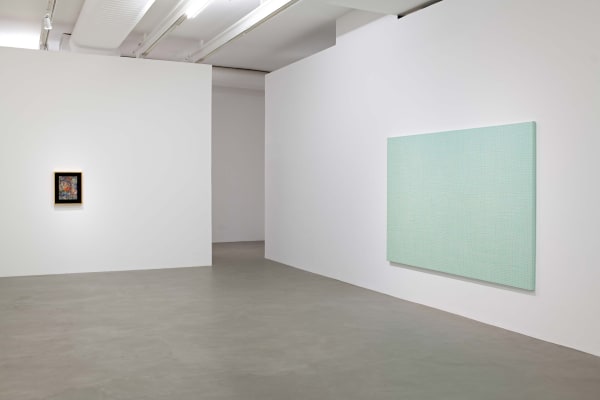
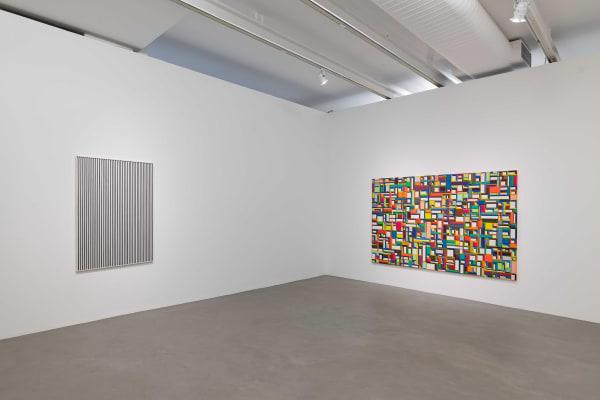
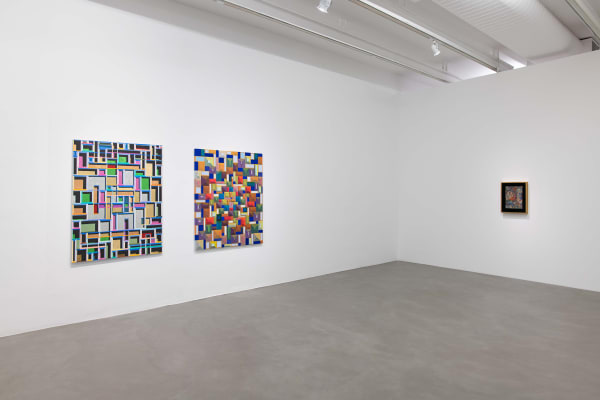
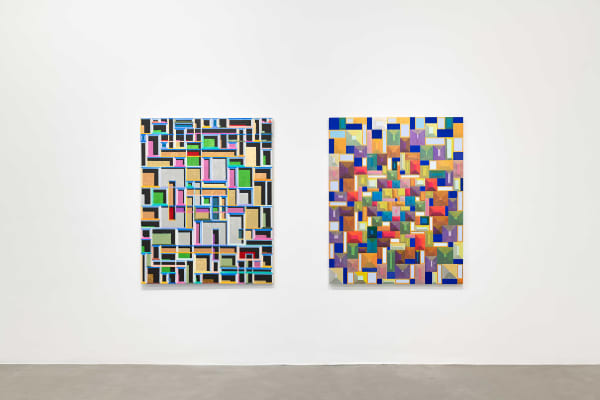
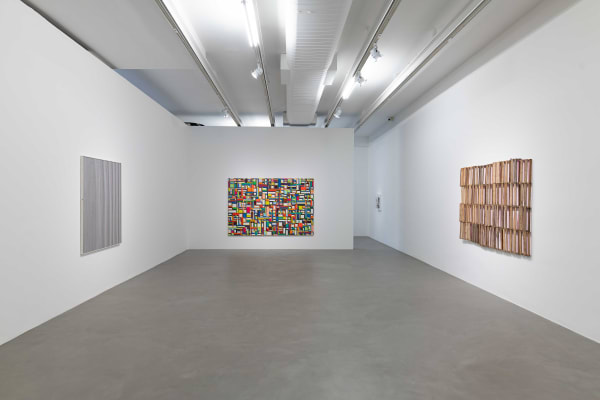
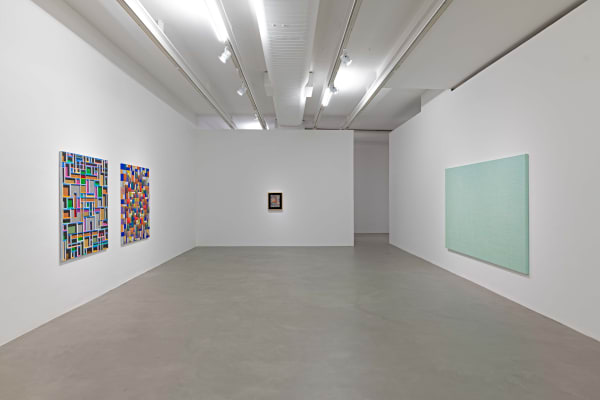
![Caetano de Almeida Vendetta, 2025 madeira, asfalto líquido e penas [wood, liquid asphalt and feathers] 60 x 46 x 20 cm 23 5/8 x 18 1/8 x 7 7/8 in](https://artlogic-res.cloudinary.com/w_600,c_limit,f_auto,fl_lossy,q_auto/ws-galerialuisastrina/usr/exhibitions/images/exhibitions/271/caetano_de_almeida11-edouardfraipont29012025artlogic.jpg)
![Caetano de Almeida Loggia, 2024 acrílica sobre tela [acrylic on canvas] 145 x 194 x 5 cm 57 1/8 x 76 3/8 x 2 in](https://artlogic-res.cloudinary.com/w_600,c_limit,f_auto,fl_lossy,q_auto/ws-galerialuisastrina/usr/exhibitions/images/exhibitions/271/caetano_de_almeida8-edouardfraipont29012025artlogic.jpg)
![Caetano de Almeida Roma, 2024 acrílica sobre madeira [acrylic on wood] 150 x 120 x 3 cm 59 x 47 1/4 x 1 1/8 in](https://artlogic-res.cloudinary.com/w_600,c_limit,f_auto,fl_lossy,q_auto/ws-galerialuisastrina/usr/exhibitions/images/exhibitions/271/caetano_de_almeida1-edouardfraipont29012025artlogic.jpg)
![Caetano de Almeida Chimera, 2024 acrílica sobre tela [acrylic on canvas] 150 x 120 x 3 cm 59 x 47 1/4 x 1 1/8 in](https://artlogic-res.cloudinary.com/w_600,c_limit,f_auto,fl_lossy,q_auto/ws-galerialuisastrina/usr/exhibitions/images/exhibitions/271/caetano_de_almeida3-edouardfraipont29012025artlogic.jpg)
![Caetano de Almeida Anônimo, 1998 - 2025 acrílica sobre tela [acrylic on canvas] 57 x 47 x 8 cm 22 1/2 x 18 1/2 x 3 1/8 in](https://artlogic-res.cloudinary.com/w_600,c_limit,f_auto,fl_lossy,q_auto/ws-galerialuisastrina/usr/exhibitions/images/exhibitions/271/caetano_de_almeida10-edouardfraipont29012025artlogic.jpg)
![Caetano de Almeida 8 ½, 2024 acrílica sobre tela [acrylic on canvas] 180 x 270 x 3 cm 70 7/8 x 106 1/4 x 1 1/8 in](https://artlogic-res.cloudinary.com/w_600,c_limit,f_auto,fl_lossy,q_auto/ws-galerialuisastrina/usr/exhibitions/images/exhibitions/271/caetano_de_almeida5-edouardfraipont29012025artlogic.jpg)
![Caetano de Almeida Pamphilj, 2024 acrílica sobre tela [acrylic on canvas] 150 x 120 x 3 cm 59 x 47 1/4 x 1 1/8 in](https://artlogic-res.cloudinary.com/w_600,c_limit,f_auto,fl_lossy,q_auto/ws-galerialuisastrina/usr/exhibitions/images/exhibitions/271/caetano_de_almeida2-edouardfraipont29012025artlogic.jpg)
